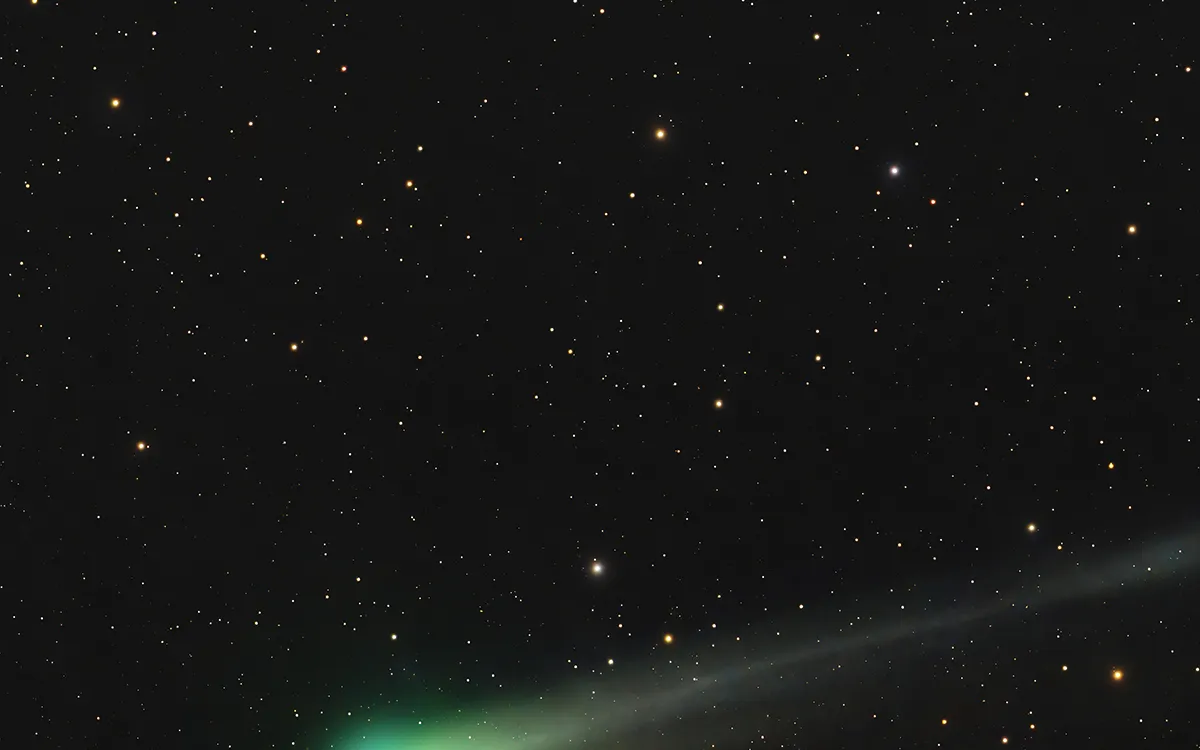
A newly discovered comet, C/2025 A6 (Lemmon), is set to make its closest approach to Earth on Tuesday night. This extraordinary celestial event offers a rare opportunity to witness a comet that will not return for over a thousand years. Stargazers in the Bay Area can expect to see this dazzling comet before it vanishes from our view.
Comet Lemmon, named after the Mount Lemmon Survey located near Tucson, Arizona, was first identified by scientists on January 3. This comet is being hailed as the best and brightest comet to observe from Earth this year. Interestingly, it shares the night sky with another comet, Comet SWAN, which is expected to diminish in brightness in the coming days.
To catch a glimpse of Comet Lemmon, experts recommend finding a dark location away from city lights approximately 45 minutes to an hour after sunset. According to Gerald McKeegan, an adjunct astronomer at the Chabot Space and Science Center in Oakland, the comet will appear low in the western sky, approximately 55 million miles from Earth. While it may be visible to the naked eye, using binoculars will significantly enhance your chances of seeing this magnificent comet.
Unfortunately, the first atmospheric river of the season may obstruct the view of the comet as it is projected to bring clouds to the Bay Area on Friday. "Unfortunately for stargazers, we are expecting clouds to return tomorrow night as onshore flow increases," stated Roger Gass, a meteorologist from the National Weather Service’s Bay Area office. However, there’s good news for avid astronomers: Comet Lemmon will remain visible until November 3, with an expected brightness increase around October 26 or 27 as it travels along its elliptical orbit around the Sun.
Similar to the vibrant green comet that captivated stargazers in 2023, Comet Lemmon showcases a shamrock-colored hue. This distinctive coloration results from the breakdown of various types of ice within the comet's structure as it approaches the Sun. As the ice transitions from solid to gas, it can emit a greenish light. "Depending on the composition of the ices in the comet, that gas can appear green," McKeegan explained. Comets may also exhibit blue or white hues, with occasional hints of other colors.
While you're gazing at Comet Lemmon, don’t miss the chance to spot Saturn in the southeastern sky around 8:30 p.m. A bright star will lead you to this magnificent planet, and with binoculars, you may even catch a glimpse of its stunning rings. Additionally, the Orionid meteor shower is expected to peak on Tuesday night, although it typically produces around 20 meteors per hour, so don't set your expectations too high.
Mark your calendars and prepare for a night of celestial wonder as Comet Lemmon makes its historic pass by Earth. This unique opportunity to witness a comet that won’t return for millennia is not to be missed!